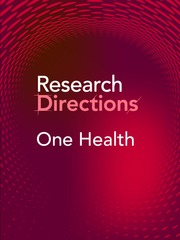Context
Socio-economic, environmental and ecological factors have repeatedly been shown to drive emerging infectious disease risk. However, these factors remain largely excluded from surveillance, warning and response systems. Similarly, even though hazards’ impacts are vastly interconnected (e.g. climate change, flooding, droughts, tropical cyclones, heatwaves, water-borne and vector-borne diseases), warning systems tend to act and work in silos. The disconnect among sectors, disaster risk reduction and health preparedness leads to reactive systems that wait for a disaster to occur before issuing a response.
This question invites researchers to:
-
– explore the relationships between hazards (human-made, biological, natural, etc.)
-
– consider how we can better account for and address drivers of disease risk
-
– propose suggestions for how we can build multi-hazard, multi-sector warning and response systems that work across the various elements of disaster risk reduction, including prevention
This research is particularly relevant both for the negotiations of a new pandemic agreement, including a One Health component, and the United Nations 2022 Early Warnings for All initiative that aims to ensure that every person on Earth is protected by an early warning system in the next five years.
How to contribute to this Question
If you believe you can contribute to answering this Question with your research outputs, find out how to submit in the Instructions for authors. This journal publishes Results, Analyses, Impact papers and additional content such as preprints and “grey literature.” Questions will be closed when the editors agree that enough has been published to answer the Question so before submitting, check if this is still an active Question. If it is closed, another relevant Question may be currently open, so do review all the open Questions in your field. For any further queries, check the information pages or contact this email [email protected].
Competing interests
The author declares none.




